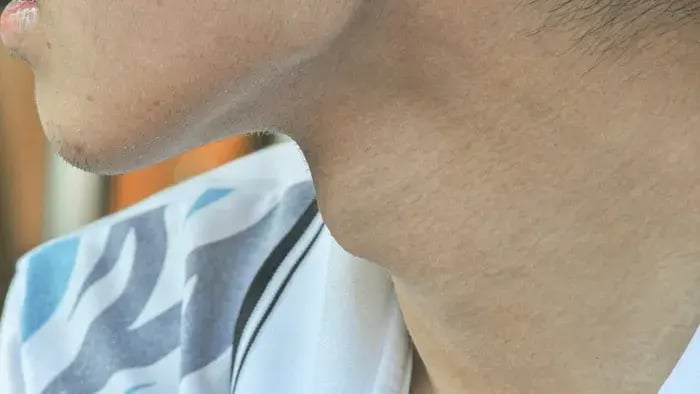- Oily Skin
- Increased Height
- Broadening of Chest and Shoulders
- Body Hair
- Breast Development Among Girls
- Adam's Apple
- Beard
- Counsel Them Early
- Be Mindful of Your Words
- Allow Open Communication
- Support Their Choices
Introduction
Adolescence is a transitional phase when a child’s body and mind start transforming slowly into an adult. Parents might witness a lot of changes in a child's visual appearance along with their emotional and mental development as well. It is also an extremely exciting phase of life as the child experiences a new sense of self-identity. Out of these many changes, one of the most common and visible changes is physical changes.
As a child's body begins to change significantly, they may observe certain confusions. There might also be a sense of body image dissonance. This can be a whirlwind experience for the child and the best way to assure that your child comfortably goes through this phase is to provide them undivided support. Parent's guidance and positive attitude can shape the way a child deals with physical changes during adolescence.
Common Physical Changes in Adolescence
Here is a list of some common physical changes that kids might go through during adolescence.
1. Oily Skin
During adolescence, the increase in the secretion of hormones, specifically androgens, may lead to the production of excessive oil and sebum. This may make the skin oilier and can also lead to acne or clogged pores among adolescents.
2. Increased Height

Adolescence is also a time when kids generally grow taller. A child may experience significant and sudden height growth. This is also known as a growth spurt
3. Broadening of Chest and Shoulders
This is a common change that occurs amongst adolescent boys where their chest and shoulders widen. This is also when boys become significantly larger in structure than girls.
4. Body Hair
Among boys, hairs may begin to grow in the region of the armpits, chest, legs, pubic region, and underarms. Among girls, hair growth can be in the region of the underarms, legs, and pubic areas.
5. Breast Development Among Girls
Girls may also begin to notice the enhancement of breast tissue in the chest region. This generally starts during the onset of adolescence but may vary from individual to individual.
6. Adam's Apple

Adam's apple is a physical change that occurs among adolescent boys. It is like a visible bump on the neck and is also called laryngeal prominence. The purpose of this bump is to protect the voice box from injury.
7. Beard
Adolescence also onsets the growth of facial hair called beard among boys. The majority of the boys may experience growth of beard between the age group of 13-16, though it may vary from individual to individual. The hormone testosterone is responsible for the growth of facial hair among boys.
How to Support Kids Through Growth and Development
As a parent, you can play a vital role in ensuring that your child goes through a comfortable transitional period of adolescence. Here is how you can extend your support to your child.
-
Counsel Them Early
Instead of waiting for the child to enter adolescence, you may start making them understand the concept of adolescence early on. Start by giving them education about the physical changes that they may experience and how to accept them without feeling embarrassed. Explain how it's normal and a biological process that every child goes through. This will help them develop a more accommodating mindset. Also, the child wouldn't feel shocked and uncomfortable all of a sudden when these changes begin to appear.
-
Be Mindful of Your Words
While your child goes through evident physical changes during adolescence, it is critical to be mindful of the words that you use. Parents should try to remember that along with physical changes, the child goes through a lot of psychological changes as well. While they are dealing with their changing bodies, they might also experience severe stress and anxiety.
In this scenario, parents must choose their words very carefully. It's always better to avoid passing any kind of comments related to your child's body. You may try to make them feel appreciative and encourage them to build a positive perception of their body.
-
Allow Open Communication
Giving your child the opportunity to approach you and ask questions freely can make your child feel more comfortable. While going through so many changes at a time, the child might start feeling lost. During this phase, you can act as an anchor for your child and guide them through confusing times.
By building a relationship of trust and honesty, you can become your child's closest confidant so that they do not have to refer to unsolicited sources of advice. The ability to voice their confusion and inhibitions may make a child feel more supported.
-
Support Their Choices
During adolescence, children may also develop certain likings and dislikes. Letting them do what they like from time to time is a great way of letting your child have a good time and feel belonged.
For instance, if your child likes to spend time with their friends or play a certain sport, it's always advisable to let them do it from time to time. This can be their sole time of enjoyment and recreation. It may also help with distracting your child's mind from constantly analyzing their body.
Conclusion

Adolescence is full of new experiences, confusion, and learning. It is that time of life when a child builds a strong sense of self-identity that guides their life trajectory. Letting your child work on their confusions while acting as a guiding light can be a good way to deal with their struggles related to self-image. Although confusion can be inevitable in certain situations, a strong partnership between a kid and parents can go a long way.
References
https://www.ncbi.nlm.nih.gov/books/NBK545476/
https://pubmed.ncbi.nlm.nih.gov/33733842/
Pakhi’s deep interest in writing is influenced by her love for cinema and fiction books. Being a literature graduate, she is relentlessly inspired by different storytelling techniques to craft her work and bring a fresh perspective to the table. Having studied psychology, she also loves to explore various psychological insights related to kids’ and parents’ behavior to create engaging content pieces. Apart from that, she enjoys jamming to some great R&B music in her leisure time.
The views expressed are that of the expert alone.
The information provided in this content is for informational purposes only and should not be considered a substitute for professional medical advice, diagnosis, or treatment. Always seek the advice of your physician or another qualified healthcare provider before making any significant changes to your diet, exercise, or medication routines.










